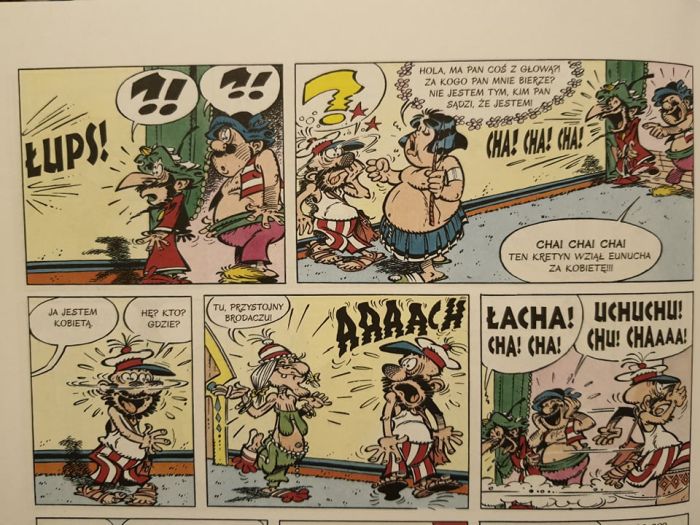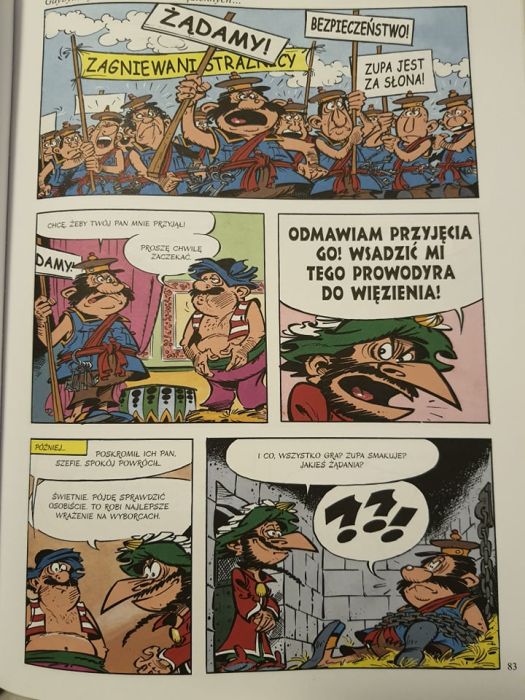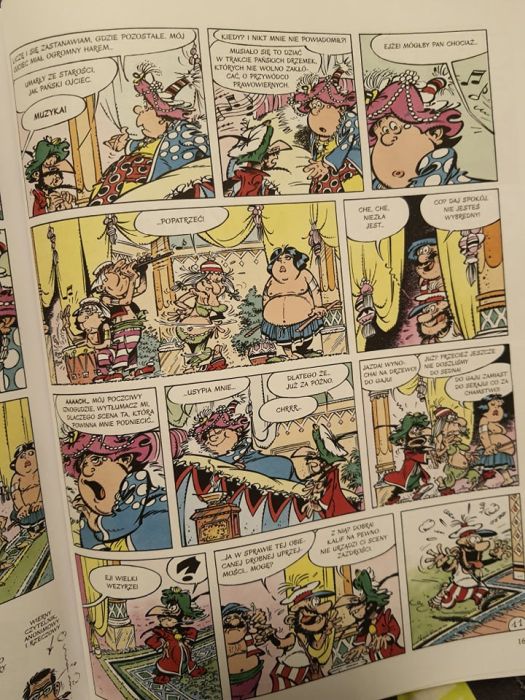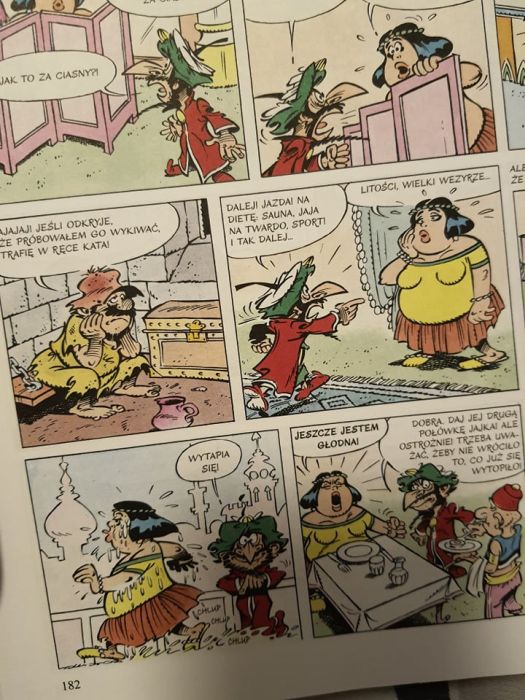Iznogud does not stop trying to make his dreams come true and uses newer and newer ways of eliminating his ruler. This time the comic contains four notebooks of his adventures. In the first pt. I want to be a caliph in place of the caliph decides to test the effectiveness of the old curse, which says that any caliph who spends a night in a haunted castle (inhabited by the ghost from lustration) will lose his head. Another attempt is associated with the employment of a scandal-maker, but as a result only the number of heads standing on the vizier’s road to seizing the throne increases. In the story about the wax figures cabinet, a whole packet of characters known from history appears and they are to support Iznogud in his activities, and in the Glorious Piernatathis task is taken over by a rather dangerous mattress. After a rather unexpected turn is taken by the main character’s last collaboration (with the magic ostrich), we move on to the Iznoguda Nightmare album , containing a collection of one-page stories from the genre of what if . Iznogud’s childhood is an adventure with time travel, magic and, additionally, a plot explaining why the vizier became so fixated on one dream. At the end of the publication, there is a story in which women are at the center – both those from the caliph’s harem, as well as completely new ones, and even a man resembling a representative of the fair sex. As you can see, a lot is happening here.

Backstory
I read the adventures of the evil vizier as a child, so I returned to them with curiosity to see how my perception had changed and to assess how they had grown old in the context of the current reality. This comic comes from France, and its creators are René Goscinny , responsible for the script, and cartoonist Jean Tabara. Looking at the publication dates of the comic books in the collective volume 4, they saw the light of day after Goscinny’s death, but they are still signed with the man’s name, so it can be assumed that these are still his deaths.

A different look at Goscinny
Goscinny is a creator close to me, primarily because of Asterix and Obelix, but also because of my beloved Mikołaj. In the case of Iznogud, however, I had the impression that his jokes do not quite appeal to me, and even in the case of female characters, they even reject them. Most of the stories about the vizier are more or less funny. The man is fixated on becoming a caliph in place of the caliph and in turn tries out various tricks to achieve his goal. It cannot be concealed that he is a terrible nerve and he is far from concluding a deal with anyone, so if something does not go as planned, he usually reaches for one solution: impalement. When it comes to the ingenuity of the adventures, they are interesting and very diverse, so reading is not boring. The usually bad ending for Iznogud also amuses: and this vizier loses his mind, other times he ends up in a dungeon or turns into something. Karma definitely comes back to him and he takes a heavy blow for plotting intrigues.

Is this the way to talk about women?
Unfortunately, one of the titles, and more precisely , Iznogud and womenit hits hard on my views on treating women. The story is about providing a visiting sultan with a chosen one, and on the way it also turns out that the caliph remembers that he should have a harem. The plot quickly turns into another vizier plot and maybe it wouldn’t even be so bad if it weren’t for elements such as: men drooling at the sight of women, or forcing an obese woman to lose weight and commenting on the process as “smelting”. There are several other flowers of this type in this comic, which caused me a deep disgust with their presence. I understand that it was once more allowed and probably none of the editors of Goscinny looked at the images or vocabulary used through the prism of insulting women, but nowadays it is an example of disrespect for my gender.

But it did get a bit old
As a character, Iznogud can amuse you, and the quote I want to be a caliph in place of the caliph has become a cult trademark of this series. In terms of the story, it is an interesting title. Graphically, it may appeal to fans of Asterix or Lucky Luke, but it is worth remembering when it was created, as some of the jokes used today may cause embarrassment in the readers.

